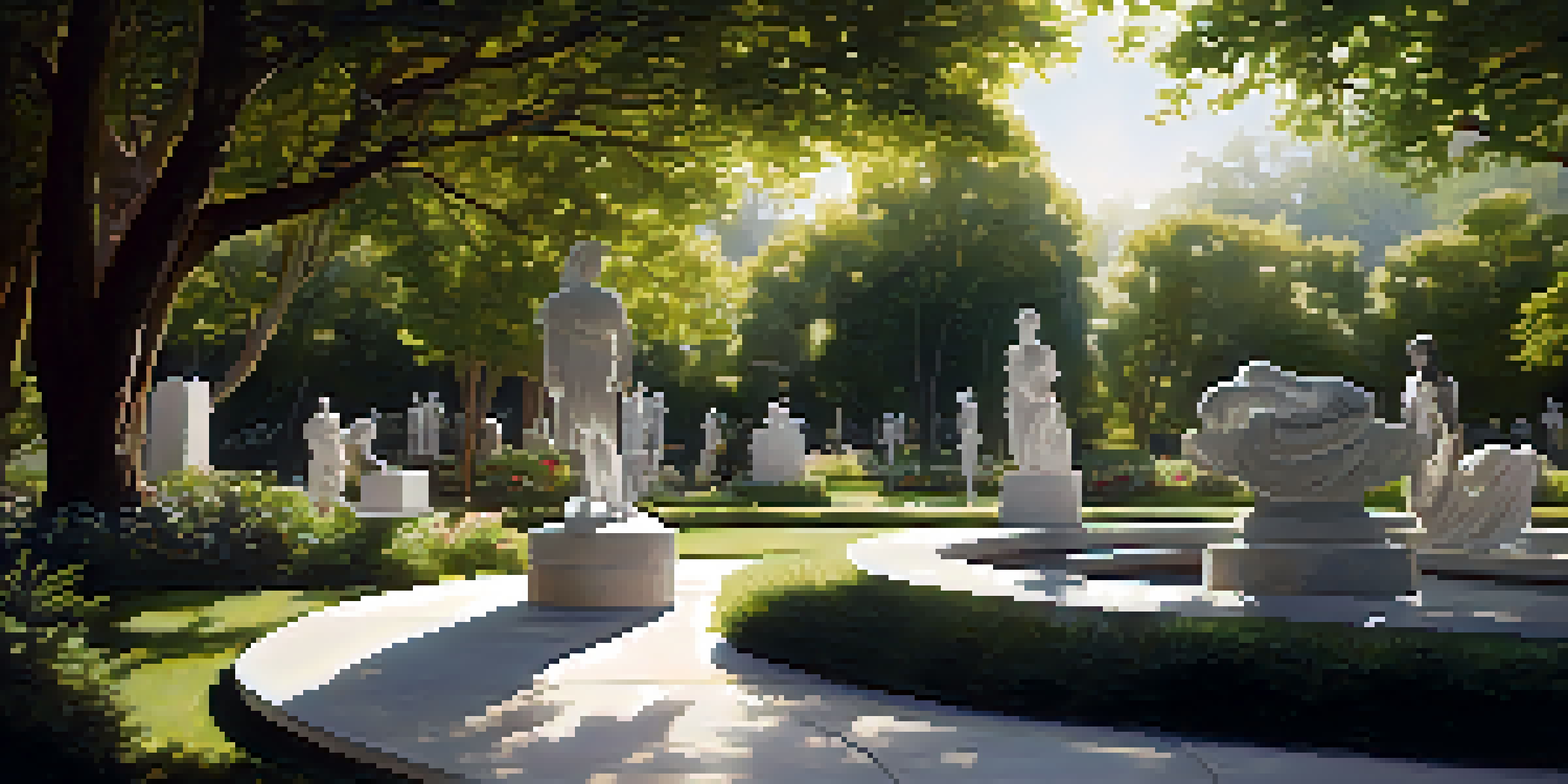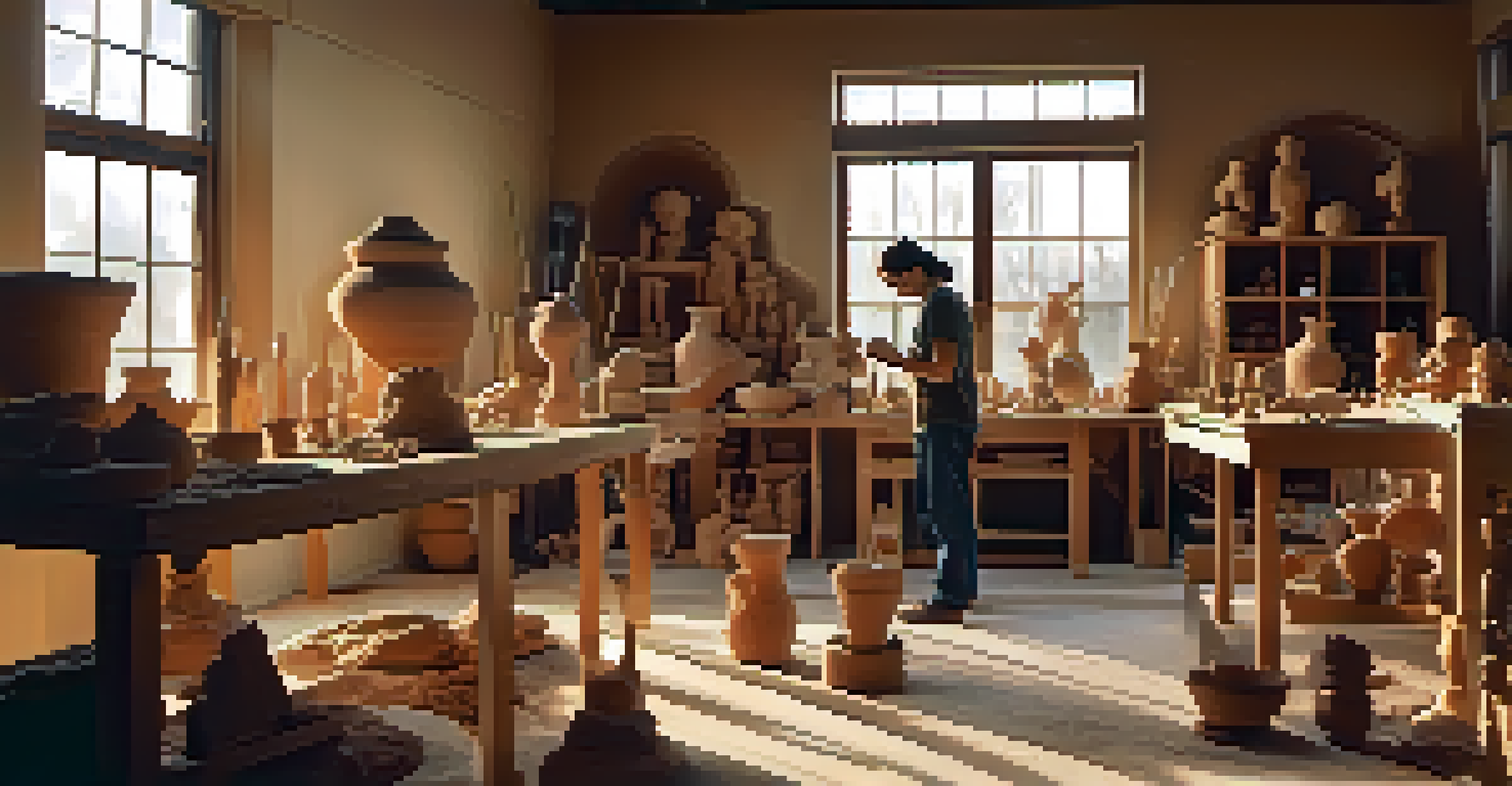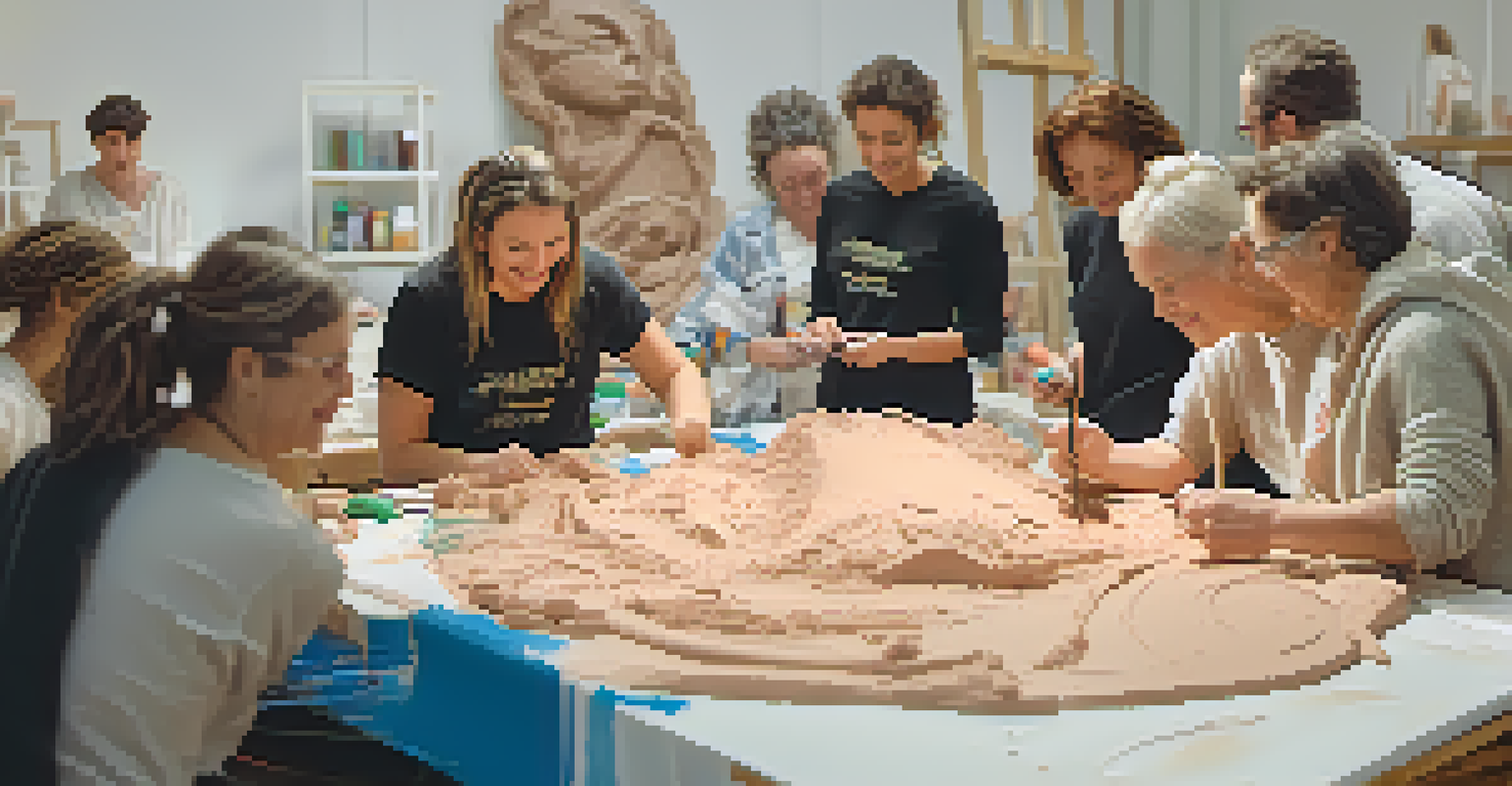The Therapeutic Benefits of Engaging with Sculpture Art

Sculpture as a Medium for Emotional Expression
Sculpture often serves as a powerful outlet for emotional expression, allowing artists to channel their feelings into tangible forms. Whether it's the smooth lines of a marble figure or the rugged texture of a bronze piece, each sculpture tells a story unique to the creator's experience. This connection between artist and medium can also resonate with viewers, enabling them to reflect on their feelings and experiences.
Art is not freedom from discipline, but disciplined freedom.
Engaging with sculpture can evoke a range of emotions, from joy to sorrow, helping individuals process their feelings. For instance, a viewer might find solace in a sculpture that embodies resilience, feeling inspired to confront their challenges. This emotional dialogue fosters a deeper understanding of oneself and the world around us.
Moreover, the act of observing or creating sculpture encourages mindfulness, anchoring individuals in the present moment. This focus can alleviate stress and anxiety, making sculpture not just an art form but a therapeutic practice.
Enhancing Mindfulness Through Sculpture Interaction
Mindfulness is all about being present, and interacting with sculpture art can enhance this practice. The intricate details and forms within a sculpture invite viewers to slow down and take a closer look, promoting a meditative state. This intentional focus allows individuals to escape the noise of everyday life, fostering a sense of peace and tranquility.

As people engage with the tactile nature of sculpture, whether by touching or simply observing, they become more aware of their senses. This sensory experience can ground them in the present moment, reducing feelings of overwhelm and anxiety. For many, this is a welcome reprieve in a fast-paced world.
Sculpture Enhances Emotional Expression
Sculpture serves as a powerful medium for artists to channel their emotions and create a dialogue with viewers.
Additionally, creating sculpture can also be a mindful practice. The process of molding, shaping, and carving encourages artists to immerse themselves fully in their craft, promoting relaxation and reducing stress.
Fostering Creativity and Imagination
Sculpture art naturally encourages creativity, both for artists and viewers. The imaginative possibilities are endless—sculptors can transform raw materials into captivating forms that challenge the mind. This creative process often inspires viewers to think outside the box, sparking their own imaginative pursuits.
The more I paint, the more I realize that the true work of art is not the canvas but the act of creating it.
Engaging with sculpture can also serve to inspire new ideas and perspectives. Looking at a piece may prompt someone to explore their creativity in different mediums, whether it's painting, writing, or even dance. This ripple effect is a testament to the power of art to inspire and connect us.
Furthermore, the act of creating sculpture allows individuals to explore their identity and personal narratives. This exploration can lead to breakthroughs in self-expression, ultimately enriching their creative journey.
Building Community Through Sculpture Art
Sculpture art often brings people together, fostering connections within communities. Public art installations, galleries, and exhibitions create opportunities for individuals to appreciate art collectively. These shared experiences can cultivate a sense of belonging and unity among diverse groups.
Participating in workshops or community projects centered around sculpture also strengthens social bonds. Collaborating on a sculpture can break down barriers and encourage dialogue among participants, creating a supportive environment. This camaraderie helps individuals feel more connected, reducing feelings of isolation.
Mindfulness Through Sculpture Interaction
Engaging with sculpture promotes mindfulness by encouraging individuals to focus on the present moment and reduce anxiety.
Moreover, engaging with local artists and their work can spark conversations about culture, history, and personal narratives. This exchange enriches the community and promotes a deeper understanding of the human experience.
Cognitive Benefits of Engaging with Sculpture
Interacting with sculpture art can stimulate cognitive functions such as critical thinking and problem-solving. Analyzing a sculpture's form and structure encourages viewers to think deeply about the choices made by the artist. This analytical engagement can sharpen one's observational skills and enhance overall cognitive ability.
For those who create sculptures, the process requires planning, spatial awareness, and dexterity. These skills are beneficial not just in art but in various aspects of life, including professional and personal development. Engaging with sculpture can thus serve as a form of mental exercise.
Additionally, exposure to various artistic styles and techniques can broaden one's understanding of art history and cultural significance. This knowledge can enrich conversations and foster a greater appreciation for different artistic expressions.
Sculpture as a Form of Healing and Therapy
Art therapy has been recognized as an effective way to promote healing, and sculpture plays a crucial role in this process. Therapists often encourage clients to engage with sculpting as a means of expressing emotions they may struggle to verbalize. This hands-on approach can facilitate healing by allowing individuals to manifest their feelings through art.
The act of creating something can also provide a sense of accomplishment and boost self-esteem. For many, sculpting can serve as a tangible reminder of their resilience and creativity, reinforcing a positive self-image. This therapeutic aspect can be particularly beneficial for those dealing with trauma or emotional challenges.
Sculpture Fosters Community Connections
Public art and community projects centered around sculpture create opportunities for social bonding and shared experiences.
Moreover, group art therapy sessions involving sculpture can foster a sense of community and shared experience. Participants often find comfort in knowing they are not alone in their struggles, building connections that can be both healing and empowering.
The Role of Sculpture in Personal Reflection
Engaging with sculpture art invites personal reflection, allowing individuals to explore their thoughts and emotions. Each piece can resonate differently depending on the viewer's experiences and mindset. This introspective process can lead to valuable insights about oneself and one's journey.
Taking time to reflect on a sculpture can reveal deeper layers of meaning, encouraging individuals to confront their feelings and beliefs. This journey of self-discovery can lead to personal growth and enhanced emotional intelligence. It’s like holding a mirror to one’s soul, prompting meaningful conversations with oneself.

Additionally, creating sculpture offers a similar opportunity for reflection. Sculptors often find that the process of making art helps them understand their emotions and thoughts more clearly, turning a simple act into a profound exploration of the self.
Conclusion: Embracing the Therapeutic Power of Sculpture
The therapeutic benefits of engaging with sculpture art are vast and profound. From fostering emotional expression to enhancing mindfulness and creativity, sculpture serves as a powerful tool for personal growth and healing. It invites us to slow down, reflect, and connect with ourselves and others in meaningful ways.
As we continue to navigate the complexities of modern life, incorporating sculpture into our routines can provide valuable respite from daily stresses. Whether it's visiting a gallery, creating art, or participating in community projects, there are countless ways to engage with sculpture.
Ultimately, embracing the therapeutic power of sculpture is not just about appreciating art—it's about enriching our lives, enhancing our well-being, and fostering deeper connections with ourselves and the world around us.